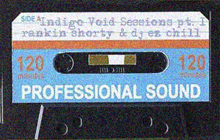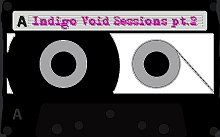
Back in the 80's most people didn't really understand the power of the 808 bass drum. Then Chuck D of Public Enemy came along. Being a philosophical kind of person, he posed what is perhaps the most fundamental question in modern music: Bass! How low can you go?
Bass.. what is it?
Here's a surprise: the deepest bass in electronic music is also the simplest kind of sound signal there is. It's called a sine wave. The sine wave is a limit case in sound business. What does that mean?

Just listen for a moment to the sounds you are hearing right now. If you listen carefully you'll notice that each sound has lower and higher parts. Sometimes the higher parts are called overtones or harmonics but they can also be noise or other vibrations.
The sine wave is fundamentally different. It has no low part and no high part. It cannot be divided, it's just what it is. It can't be filtered because nothing would be left. That's how simple and basic it is.
If the frequency of a sine wave drops below 60 Hz you can hardly hear it because it has no high stuff in it, and that's why its tonality quickly fades away. Just like you can't see infrared light. In the deepest sub bass territory (below 45 Hz) no real sound is left. Here the sine wave is just a carrier of pure pressure revealing the natural mystic of bass.

Bass! How low can you go?
Now that you understand the power of the 808 kick drum there's one more question left to answer. How low can you go? Most producers would agree that the deepest frequency that makes musical sense is somewhere between 30 and 35 Hz. There are no strict rules or exact frequency limits but no home system can reach as low as 20 or 25 Hz.
This 20 Hz to 20 kHz bass sweep illustrates that you can't hear 20 Hz bass. Unless you use high quality headphones you just won't hear the first part of the sound. Especially not if you play this through tiny little laptop speakers.
DIY-time: how to create the deepest bass possible
Rolling your own digital sine waves is very easy. Free audio software like Audacity allows you to create a 808 ultra blast in a few seconds.
Start up the program and go to Generate/Tone. At default settings Audacity will generate a 30 sec. 440 Hz sine wave at maximum amplitude. Now change the settings: frequency down to 30 Hz and length as long as you want.
There it is.. you have entered the Temple of Boom. If you lower the frequency even further you'll eventually go from sound territory to LFO territory which can be interesting too, but only for modulation.
How to create the ugliest bass possible
When producers need a clear and heavy boom they go for a sine wave. But there are other kinds of low frequency sounds. The sonic character of white noise is exactly the opposite of the sine wave. It is also a limit case. Some producers use white noise to rough up clean sounds, but usually in the mid frequencies only. Because bass noise is ugly. If you want to hear the ugliest possible bass sound try using white noise, and then filter away everything above 100 Hz.
Here's how you would do it in Audacity. Go to Generate/White Noise and enter a length. Now go to Effect/Low pass filter and set the cutoff frequency at 100 Hz. Repeat this filtering a few times to get rid of all high stuff and voila! A really shitty bass sound.

57 octaves below
On a cosmic scale, there are sounds much deeper than the deepest 808 kick drum. Black holes are actually the biggest subwoofers known to science. A black hole 250 million light years away is emitting a low B-flat 57 octaves below middle C. That's about as low as you can go.
















